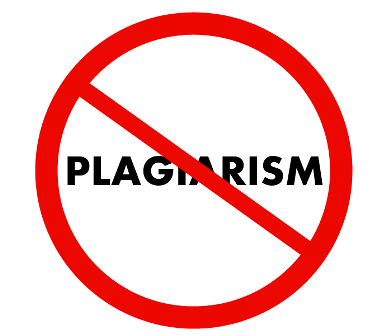Correct referencing and bibliography

Why referencing all your sources of information is important, different reference styles and how to write a bibliography are all included in this section.
What is referencing?
Referencing is the process whereby all sources of information and ideas from others that have been used in the Extended Essay are acknowledged in a standardised way so that their source is uniquely identified. This includes facts and figures, direct quotations and ideas, methods and theories that have been taken from both published (whether in print or online) and unpublished works (for example personal communications).
There are many different acceptable styles of referencing (see useful sites below). The IB does not insist on any one particular style. Some schools prefer all their students to use one particular style, other schools allow the student to select their own style - which ever style you use you it must be used consistently throughout the whole of your Extended Essay. There is a section on referencing in the Extended Essay Guide and in many schools the librarian will be able to give help and advice.
Referencing is important as:
It avoids plagiarism.
Information can be verified from its source.
An interested reader can follow up the reference to read more.
It is important to record all necessary information when referencing a source. Different types of sources require different information. For example for a book, the author/editor, title, year of publication and publisher are required for the bibliography. For the citation within the Extended Essay the page number(s) is/are also required. For electronic information such as a web page the web address and the date it was accessed should also be included.
Within the text of the body of the Extended Essay a citation should be made in the appropriate place whenever an external source is used. There are various ways in which this can be done. These include for example:
Putting the author(s) name(s) in brackets with the page number.
Using a superscript number and then adding the publication and page number at the bottom of the page as a footnote to correspond with the superscript number.
At the end of the Extended Essay a list of all the cited sources should be included. Technically this is called a Reference List. For the IB it is sufficient to include all these in the Bibliography rather than produce a separate reference list.
The bibliography
A bibliography is a list of every source used to research and write the Extended Essay whether they were cited in the body of the essay or not. There are several different accepted styles that can be used and different subjects seem to favour different styles. For example, natural scientists tend to use CBE or Harvard and social scientists tend to use APA or APSA but for the IB it does not matter which system is followed.
What does matter is:
- Whichever system is used it must be consistent – do not use different styles within the same bibliography.
- In Chemistry it is not important to list the references alphabetically. (In fact it is more common to list them in the order they are cited in the Extended Essay)
- Ensure that each reference contains
The author(s)
The title of book or article etc. (often given in italics)
Publisher
Date (normally year of publication)
- Generally sources that were not used to research the Extended Essay should not be included unless they may be of particular interest to a reader. Include sources you read for general information as well as those you actually cited.
- When citing a website include the date it was accessed.
Useful sites
Curtin University in Australia has produced one of the clearest sites detailing how to reference and you can download pdf files on the different ways of referencing.
You can also download pdf files or information from other sources e.g. Chicago Author-Date referencing and APA style.
For information about other styles of referencing look at
University of Melbourne for Harvard Author-Date style
University of Wisconsin for footnotes using Chicago style
A simple guide to using the Harvard system has been produced by Cite me It contains detailed instructions to reference:
Books
Encyclopaedias
Periodicals
Newspapers
Audio-Visual Materials
CD ROM
Internet
Email
Personal Communication
For online help with compiling and checking references a programme called EndNote can be used. This can be downloaded free on a trial basis from EndNote itself or from other sites such as Brothersoft.
Online assistance with creating a bibliography is given by The Automatic Bibliography & Citation Maker and by Noodletools – Creating a bibliography online. Another site that automatically makes a bibliography for you is BibMe.
Comment on a genuine bibliography
Look carefully at the following bibliography and comment upon it. Does it fulfil the requirements, or could it be improved?

Click on the eye to see my comments
At first glance this looks very good. However on closer inspection no publisher is given for the third and eighth references and no dates (years) are given for the first, fifth and eighth references. The dates of access of websites for references 9, 10 and 11 are not given. The author's university is missing in reference 13. The way in which the authors are named is not consistent - some have just surname (e.g. 2 and 7), one has initial(s) and surname (4). and some have first name and surname (e.g. 1, 3 and 5).
Avoiding plagiarism
Finally, make sure you avoid any form of plagiarism, as not only may your EE be penalized but your whole Diploma may be at risk if the IB finds that your work is plagiarized.
 Plagiarism can be a real problem with Extended Essays. This is because your Extended Essay is likely to be the first time you will have been faced with writing a research paper using the work of others and many students may be unaware as to exactly what constitutes plagiarism. Your school should carefully explain what is meant by plagiarism and academic dishonesty. One of the problems is the international nature of the IB, as different cultures around the world have different views and practices regarding plagiarism. This makes it even more important to understand exactly what constitutes plagiarism and what is unacceptable to the IB. Your school must have an Academic Honesty policy which you must read and understand as it not only covers plagiarism but also other forms of malpractice such as collusion.
Plagiarism can be a real problem with Extended Essays. This is because your Extended Essay is likely to be the first time you will have been faced with writing a research paper using the work of others and many students may be unaware as to exactly what constitutes plagiarism. Your school should carefully explain what is meant by plagiarism and academic dishonesty. One of the problems is the international nature of the IB, as different cultures around the world have different views and practices regarding plagiarism. This makes it even more important to understand exactly what constitutes plagiarism and what is unacceptable to the IB. Your school must have an Academic Honesty policy which you must read and understand as it not only covers plagiarism but also other forms of malpractice such as collusion.
Be aware that before your essay is submitted to the IB your supervisor must confirm that the work is all your own. He or she may check your work by using one of the plagiarism detection sites and the IB examiners may also check your work for plagiarism if they are at all suspicious that the work is not your own.

 IB Docs (2) Team
IB Docs (2) Team